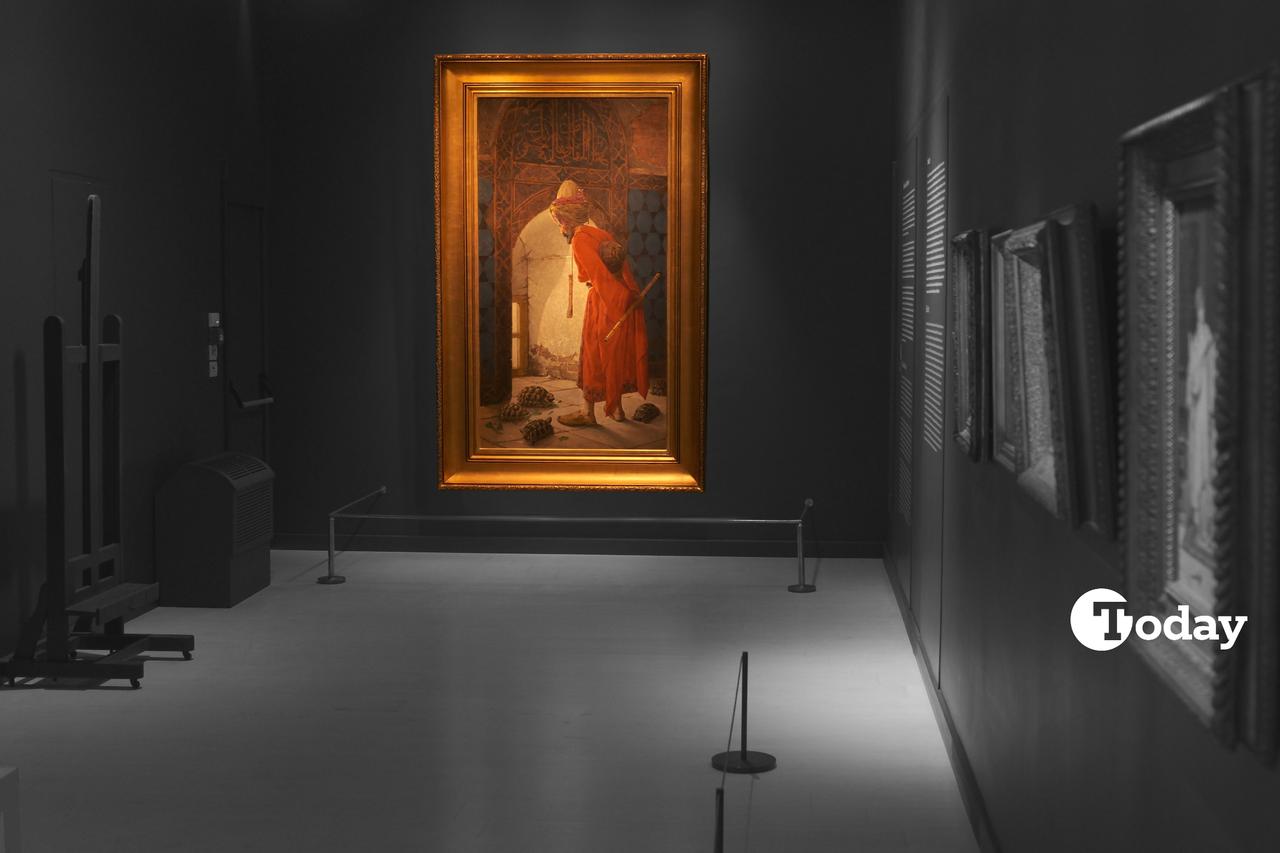
A silent man in flowing robes stands motionless, watching tortoises crawl at his feet. He holds a reed flute, a small drum tied to his back, and appears both serene and stern — an enigma in an arched, tiled chamber.
This striking figure, immortalised in The Tortoise Trainer by Osman Hamdi Bey, continues to captivate visitors at Istanbul’s Pera Museum, where the original 1906 painting is now on display. More than a century after its debut in Paris, the work remains one of the most iconic and symbolically rich paintings in the history of Turkish art — at once a self-portrait, a subtle critique, and a deeply layered meditation on identity, tradition, and transformation.
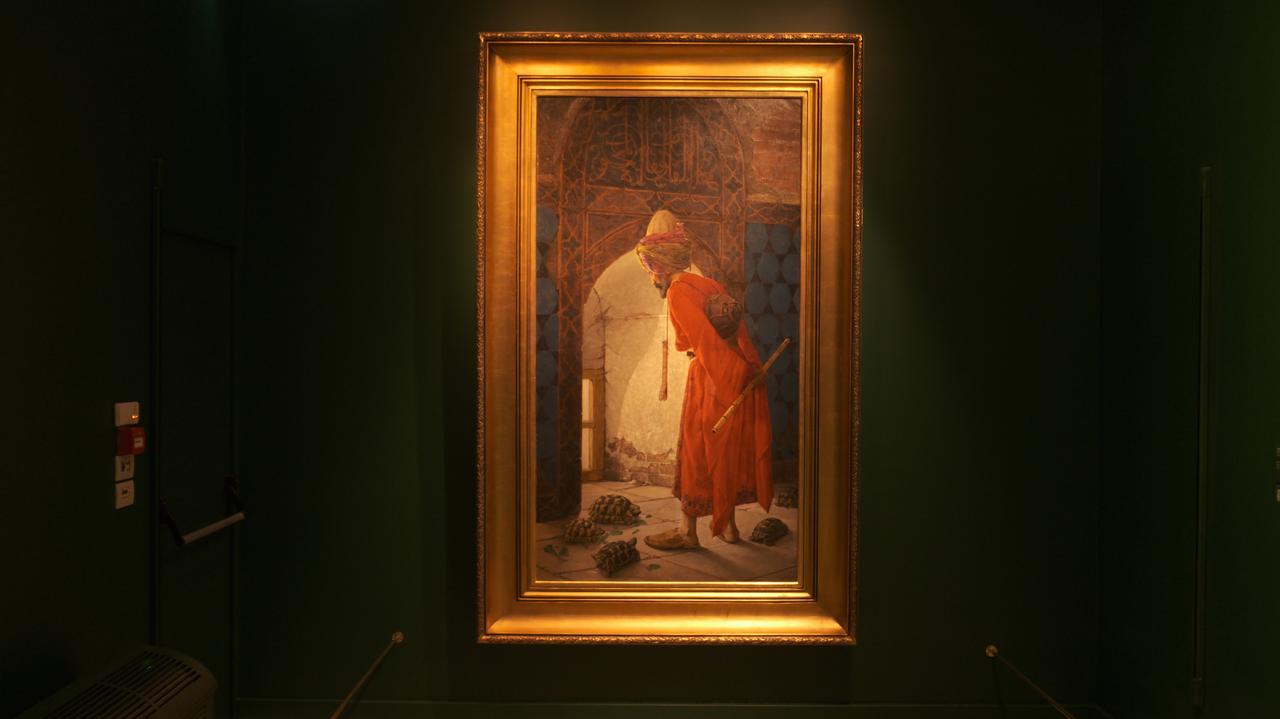
The Tortoise Trainer by Osman Hamdi Bey, was first exhibited on May 1, 1906, at the Grand Palais in Paris. Presented at the Salon exhibition organized by the Société des Artistes Français, the painting appeared in French as L’homme aux Tortues (The Man with Tortoises), and in one English-language catalog simply as Tortoises. The date written on the painting suggests it was completed in the early months of 1906 to be ready for the May exhibition.
A year later, the artist created a second, smaller version of the painting, which features slight compositional differences and a dedication to his relative by marriage, Salih Munir Pasha.

The idea behind the painting may have originated decades earlier. While in Baghdad, Osman Hamdi Bey wrote to his father, expressing delight in reading a copy of Tour du Monde magazine. That issue included an article by Swiss diplomat Aime Humbert, who described scenes from Japan involving so-called “tortoise trainers,” believed to be Korean performers. These trainers taught tortoises to walk in line and climb atop one another to the beat of a drum. A visual engraving of this peculiar practice accompanied the article. This early encounter could have sparked the idea that eventually developed into one of his most celebrated works.
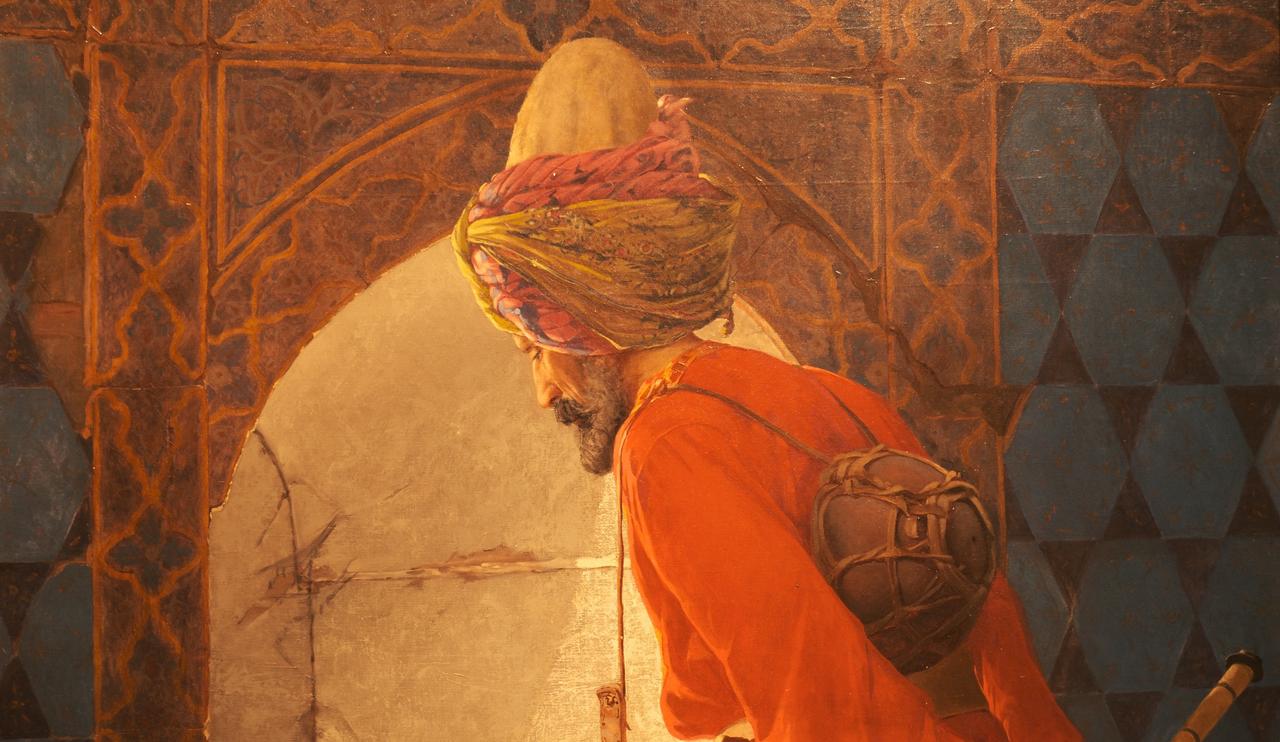
The painting shows a man dressed in traditional Eastern attire, holding a ney (reed flute), with a percussion instrument resembling a kudum or nakkare strapped to his back. He appears to be observing tortoises feeding on the ground. The inscription above the arched window reads, “Healing of the hearts lies in reunion with the Beloved (the Prophet Muhammad).”
The room depicted is the upper floor of the Green Mosque in Bursa, a location that features often in Hamdi Bey’s paintings. As with many of his works, the artist used himself as the model. He had photographs taken from specific angles and later used these references to paint the figure—essentially creating a kind of self-portrait or “selfie.”
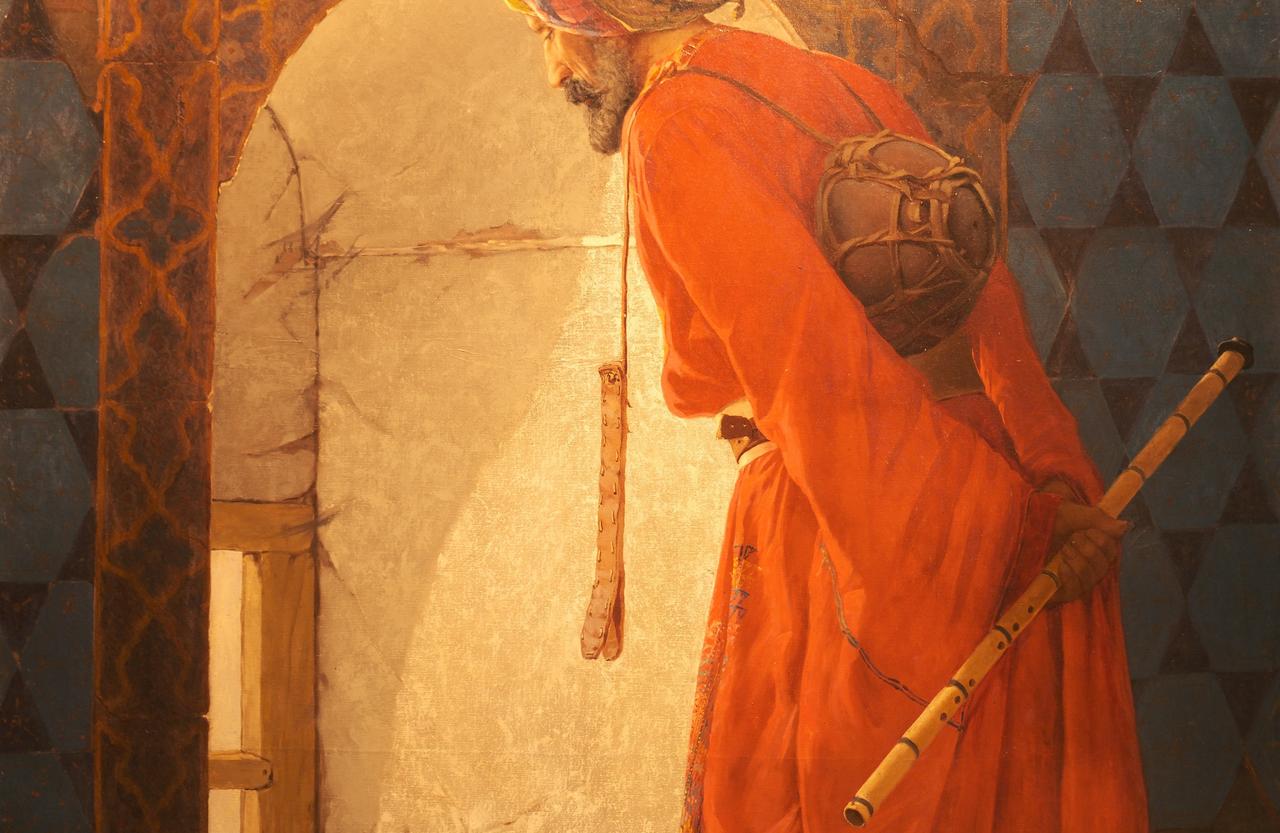
Although the figure may resemble a dervish due to the musical instruments, the headgear resembles that of the “Kurd from Mardin” as described in Ottoman costume references. During his time in Vienna, Osman Hamdi was photographed wearing similar clothing. This suggests he carefully constructed his compositions using visual references from photographs, a method he frequently employed.
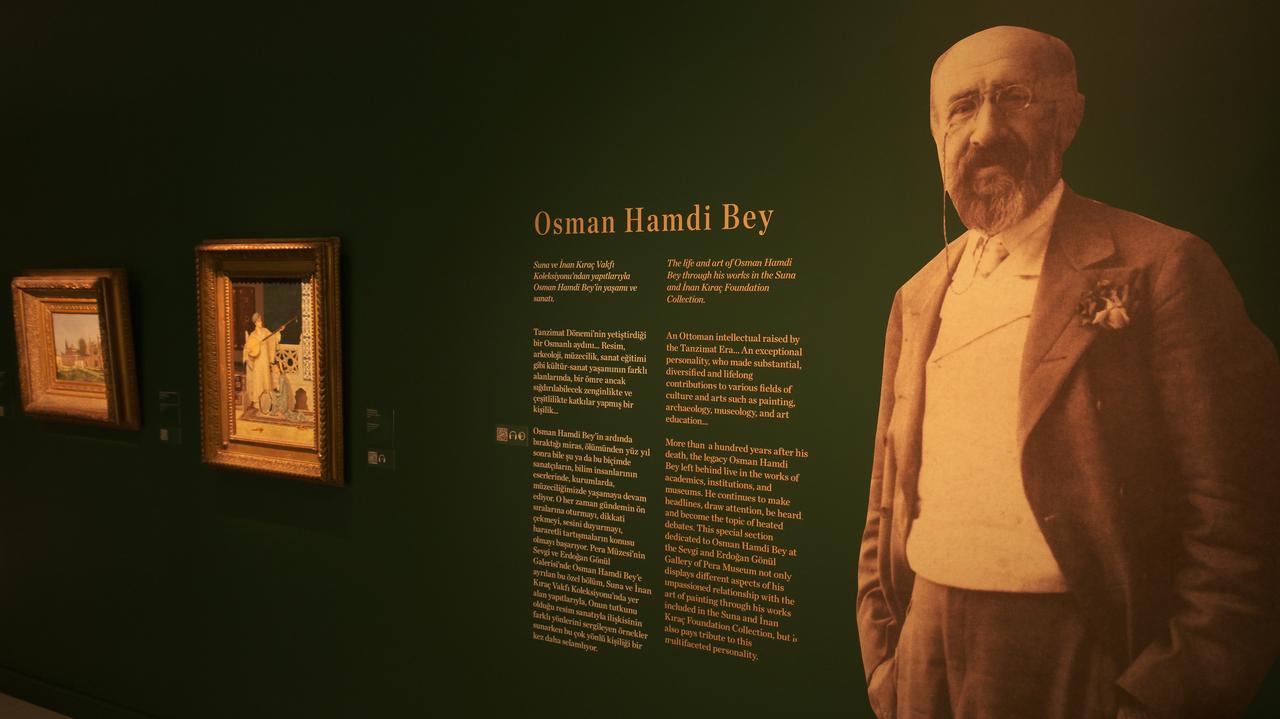
The Tortoise Trainer is one of five works by Osman Hamdi Bey held in the Orientalist Painting Collection of the Suna and Inan Kirac Foundation. Together, these paintings highlight the range of his themes and stylistic approaches. Works like Two Musician Girls, made for a similar exhibition setting, display his interest in Orientalist subjects and reflect French academic painting techniques. Meanwhile, Shepherd Mustafa Pasha Complex in Gebze shows landscapes of Gebze and Eskihisar, painted with a freer brush. His portraits, such as The Girl with the Pink Headscarf and Kokenoglu Riza Efendi, depict individuals from his personal circle.
As a group, these works offer a comprehensive view of Osman Hamdi Bey’s artistic output and allow for a more nuanced understanding of his legacy.